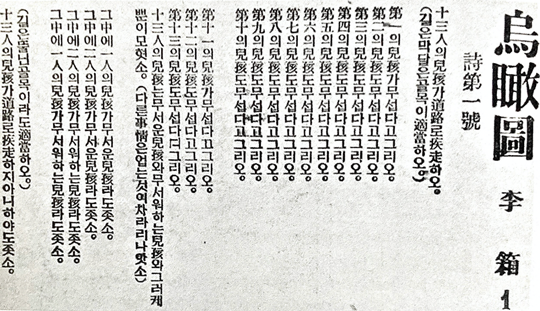Paranoid Wonder: A review of Yi Sang’s Selected Works (tr. Don Mee Choi, Jack Jung, Joyelle McSweeney, and Sawako Nakayasu)
Paranoid. Labyrinthine. Uncanny. Secretive. This is how a Korean literature enthusiast might describe the works of Yi Sang (1910-1937) before words eventually fail them. They might then offer up details of his life: that Yi lived during the Japanese occupation, that he trained as an architect, that his pen name sounds like Korean for strange or ideal, that he succumbed to tuberculosis in Tokyo after a period of incarceration for the crime of being futei senjin–a “lawless Korean.” When you hear about Yi Sang for the first time, there is something intoxicating about the reverential air, the residual awe, the mourning over what might have been. Everyone mentions how he died so young.
With the release of Yi Sang: Selected Works (Wave Books, 2020), English-language readers can chart their own journeys of paranoid wonder. The volume boasts over 200 pages of translated poetry, essays, and fiction, organized into four sections. Jack Jung tackles the Korean-language poems and essays; Sawako Nakayasu covers the Japanese language poetry; Don Mee Choi and Joyelle McSweeney collaborate over his fiction. But there is more to this division of labor than boundaries of language and genre. The volume includes essays from the translators, who speak in voices at once scholarly and personal, urgent and elegiac.
Selected Works acts as a sourcebook of images too, crucial for appreciating Yi Sang who was also a talented illustrator and artist. Much would be lost if we did not take into account the visual dimensions of his work, the unsettling emotions they were meant to evoke. Below are reproductions of “Crow’s Eye View” Poems No. 1 and No. 4, originally published in Chosun Central Daily in 1934:

Poem No. 1
For twenty-first century readers accustomed to eye-popping colors and sleek lines, the prickly black script and claustrophobic spacing may induce dread or ghoulish foreboding. Even if we can’t read the scripts in the original, we may detect lines of relentless repetition moving from right to left. We may in fact discern something presciently code-like, resembling the glittering digital rain in The Matrix. READ MORE…



